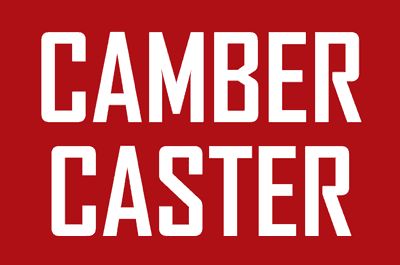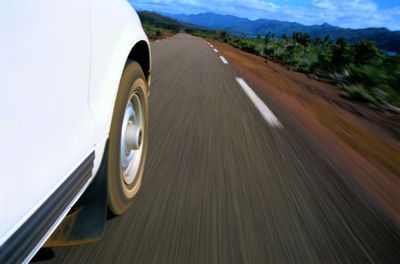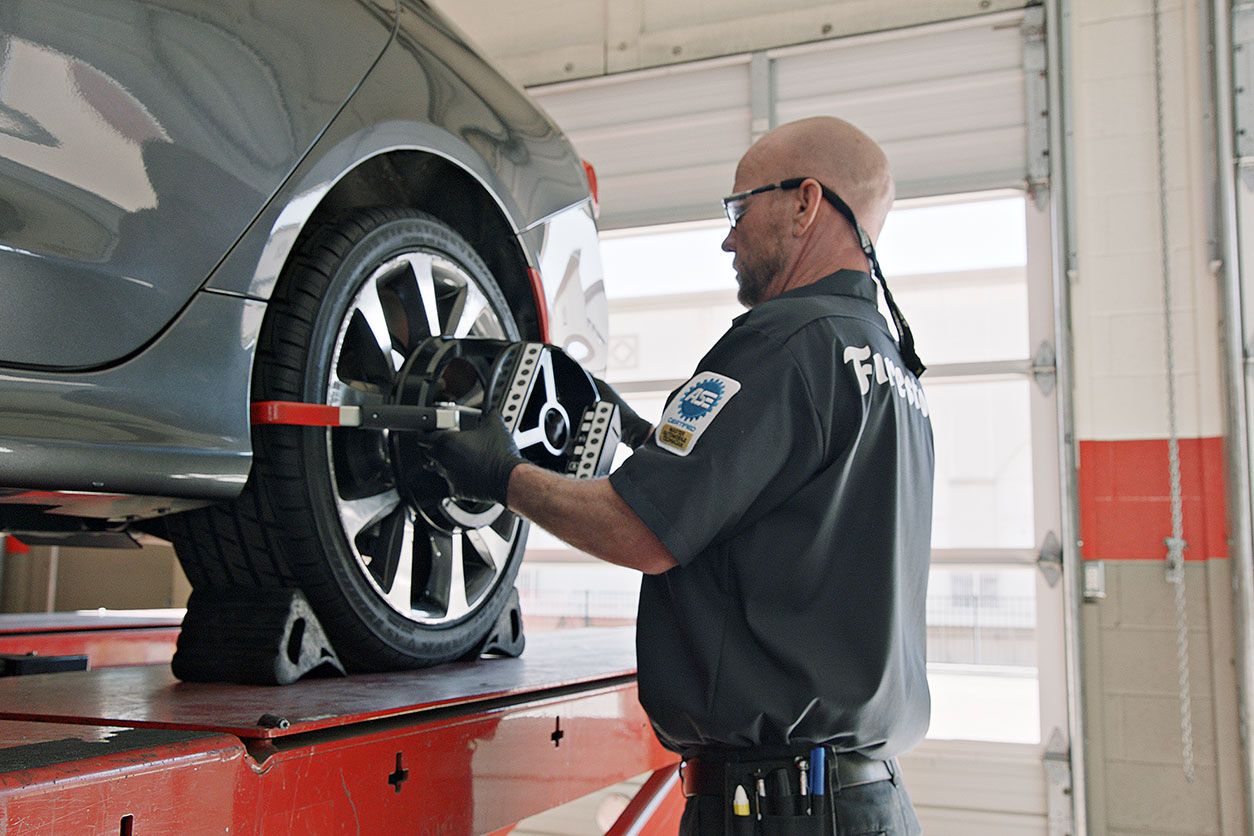Diagnostic Terms
What is a thrust angle?
Does the tail wag the dog? Thrust, and its respective thrust angle, all relate to the positioning angles for your back tires.
The thrust angle is the degree in which the back tires try to steer the front of the vehicle and is a major factor in your car’s ability to keep you cruising along a straight path. The more the thrust angle is off, the more the rear of the car will steer the front.
To align a vehicle accurately, it is important to understand the positions of all tires.
Whether your vehicle has a completely independent suspension or not doesn’t matter. It is critical to understand how the rear tires are pointed (thrust angle) to accurately adjust the front tires. It’s a complicated process, but we’ll get you pointed in the right direction.
How do excessive thrust angles affect my tires and suspension?
When the thrust angle is off, it’s like walking a dog: you want to go one way, the dog wants to go the other. As it applies to your driving, if the back of the vehicle steers one way and the front another, then the vehicle is fighting itself and this causes excessive tire scrub and adds extra stress to steering and suspension components.
Quick fact: Accelerated, damaging tire and suspension wear can occur in the scenario described above, so have your vehicle’s alignment checked, especially if you’re beyond the recommended 6,000 mile alignment interval.
Get an Alignment Check and get back on the right path.
What is the geometric centerline?
The geometric centerline is pretty much the center of the alignment universe. It’s the equator for your car. If you’re catching our drift, the geometric centerline is the line that every alignment angle is based off. It’s physically represented as the center line between the front two and back two tires. If you need a more tangible way to think about the centerline, mentally draw a line down the middle of your car from bumper to bumper.
The geometric centerline is used:
- as a reference line for rear individual toe angles
- as a reference line for thrust angle
What is a Steering Angle Sensor (SAS)?
The Steering Angle Sensor, sometimes referred to as SAS, is an electronic monitoring device. Its sole purpose is to measure the position, force and turning rate of your steering wheel. It then reports those results to the various vehicle systems depending on it.
A lot is riding on your SAS.
Everything from your Electronic Stability Control to your Electric Power Steering is affected by the SAS and how you personally operate your vehicle. It is the job of the SAS to communicate and supply your unique driving habits so that your car steers in harmony with your driving habits.
After every alignment, the SAS must be reset.
In order for your alignment settings to function properly, the SAS must be reset. This is necessary for your computer to correctly process the changes that have occurred and for your computer system to relay the correct information about your steering wheel position to the systems that depend on its information to function properly.
What is Steering Axis Inclination (SAI)?
The Steering Axis Inclination (SAI) basically operates like your caster, helping your steering wheel return to the straight-ahead position after making a turn or changing lanes. SAI is not adjustable. So, if your SAI happens to be off, this means part of your suspension is damaged or worn and will need to be replaced in order for the SAI to function as intended.
Symptoms that spell SAI trouble:
- Tires turning in or out as you’re attempting to drive straight ahead.
- Vehicle lifts slightly when you turn the wheel from the straight ahead position.
Steering Issues? We can solve them.
What does "ride height" have to do with a wheel alignment?
Pretty much everything. You could say it’s the puppet master of your suspension. Your ride’s height will determine the positioning of everything controlling your ride.
Your ride height will have a positive or negative effect on these components or alignment settings:
Your ride height will need to be precise for your vehicle to be in perfect working order. All these factors are designed to ensure ultimate handling, performance and overall driving experience. All alignment angles will be based off your ride (chassis) height.
Quick Fact: Ride height can be affected by lugging too much around in your trunk, or simply by fair wear and tear as your vehicle ages.
Did you know? Every vehicle has a specific ride height. If it is below that height, that’s an indication that parts are worn and may need to be replaced in order for your car to align properly.
Ready for the perfect alignment? So are we.



